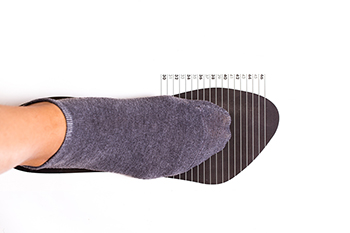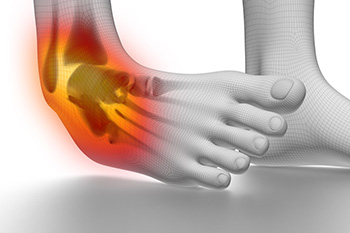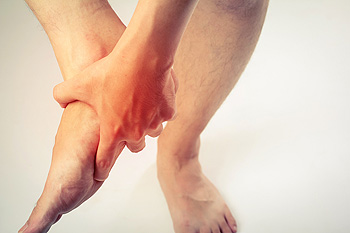
Embarking on the quest for the ideal shoe size is an important yet often underestimated journey. To find the perfect fit, one must prioritize comfort and functionality. Start by measuring both feet, as they can vary in size, and choose the size that accommodates the larger foot. Consider the shoe's width, ensuring ample room for toes without constriction. Pay attention to the arch and heel support, elements that play a pivotal role in overall comfort. Try on shoes later in the day when feet tend to swell slightly, mimicking real-life conditions. Walk around to assess how the shoes feel in motion, checking for any discomfort or pressure points. For detailed information about how to accurately measure the feet, it is suggested that you schedule an appointment with a podiatrist.
Getting the right shoe size is an important part of proper foot health. Seek the assistance of Dr. Lubrina Bryant from District Podiatry, PLLC. Our doctor will provide the care you need to keep you pain-free and on your feet.
Getting the Right Shoe Size
There are many people who wear shoes that are the incorrect size, negatively affecting their feet and posture. Selecting the right shoes is not a difficult process, so long as you keep several things in mind when it comes to choosing the right pair.
As our feet hold our body weight and keep us moving, it is important to treat them right. Picking the right pair of shoes can provide your feet comfort and mobility without pain.
If you have any questions, please feel free to contact our office located in Washington, D.C . We offer the newest diagnostic and treatment technologies for all your foot care needs.

Ankle sprains, a prevalent injury often stemming from sudden twists or rolls, have a distinctive set of symptoms. One prominent indicator is pain, typically localized around the affected ankle, varying in intensity based on the severity of the sprain. Swelling is another hallmark symptom, as the injured ligaments prompt the body's natural response to inflammation. Limited range of motion, especially when attempting to bear weight or move the ankle, is a clear sign of an ankle sprain. Bruising may emerge due to blood vessel damage, presenting as discoloration around the injured area. Tenderness to the touch and the sensation of instability are additional signs of a sprain. Recognizing these symptoms is imperative, guiding individuals to seek appropriate medical attention. If you have sprained your ankle, it is suggested that you visit a podiatrist who can correctly diagnose and treat this condition.
Although ankle sprains are common, they aren’t always minor injuries. If you need your ankle injury looked at, contact Dr. Lubrina Bryant from District Podiatry, PLLC. Our doctor can provide the care you need to keep you pain-free and on your feet.
How Does an Ankle Sprain Occur?
Ankle sprains are the result of a tear in the ligaments within the ankle. These injuries may happen when you make a rapid shifting movement while your foot is planted. A less common way to sprain your ankle is when your ankle rolls inward while your foot turns outward.
What Are the Symptoms?
Preventing a Sprain
Treatment of a Sprain
In many cases, the RICE method (Rest, Ice, Compression, and Elevate) is used to treat ankle sprains. However, you should see a podiatrist to see which treatment option would work best with your injury. In severe cases, surgery may be required.
It is important to ask your doctor about rehab options after you receive treatment for your injury. Stretching, strength training, and balance exercises may help the ankle heal while also preventing further injury.
If you have any questions, please feel free to contact our office located in Washington, D.C . We offer the newest diagnostic and treatment technologies for all your foot care needs.

Plantar fasciitis is prevalent in manufacturing environments, with several factors influencing its occurrence. These can include forefoot pronation during physical examination, high metatarsal pressure in gait assessments, and prolonged standing on hard surfaces. The rotation of footwear during the workweek appears to reduce the likelihood of developing plantar fasciitis. Using shoe orthoses with medial longitudinal arch and metatarsal pads can serve as a preventive or treatment approach. Implementing workstations that reduce the time spent walking or standing on hard surfaces, such as offering cushioning mats or alternating sitting and standing postures, may help lower the risk of plantar fasciitis. If you work in manufacturing and have developed heel pain, it is suggested that you schedule an appointment with a podiatrist for a proper diagnosis, treatment, and additional preventative advice.
Plantar fasciitis is a common foot condition that is often caused by a strain injury. If you are experiencing heel pain or symptoms of plantar fasciitis, contact Dr. Lubrina Bryant from District Podiatry, PLLC. Our doctor can provide the care you need to keep you pain-free and on your feet.
What Is Plantar Fasciitis?
Plantar fasciitis is one of the most common causes of heel pain. The plantar fascia is a ligament that connects your heel to the front of your foot. When this ligament becomes inflamed, plantar fasciitis is the result. If you have plantar fasciitis you will have a stabbing pain that usually occurs with your first steps in the morning. As the day progresses and you walk around more, this pain will start to disappear, but it will return after long periods of standing or sitting.
What Causes Plantar Fasciitis?
There are some risk factors that may make you more likely to develop plantar fasciitis compared to others. The condition most commonly affects adults between the ages of 40 and 60. It also tends to affect people who are obese because the extra pounds result in extra stress being placed on the plantar fascia.
Prevention
There are a variety of treatment options available for plantar fasciitis along with the pain that accompanies it. Additionally, physical therapy is a very important component in the treatment process. It is important that you meet with your podiatrist to determine which treatment option is best for you.
If you have any questions, please feel free to contact our office located in Washington, D.C . We offer the newest diagnostic and treatment technologies for all your foot care needs.

Ankle disorders encompass a range of conditions affecting the bone, muscle, and soft tissue. The most common ankle disorders include sprains, fractures, tendonitis, and arthritis. Sprains, resulting from ligament injuries, often stem from activities such as running, jumping, or overuse. Fractures may occur due to twisting, falling, or forceful landings. Tendonitis, marked by tendon inflammation, can be attributed to inadequate muscle conditioning, excessive strain on the Achilles tendon, heel bone spurs, or untreated flat feet that cause stress on the posterior tibial tendon. Arthritis, a chronic joint inflammation, manifests in various forms affecting the foot and ankle. Osteoarthritis, a degenerative type, emerges with age, leading to cartilage deterioration and joint pain. Rheumatoid arthritis, an autoimmune disorder, results from the body attacking healthy tissues and impacts joints and cartilage. Post-traumatic arthritis, arising after foot or ankle injuries, induces stiffness and inflammation in joints, even years later. If you suspect an ankle disorder, it is suggested that you consult a podiatrist for an accurate diagnosis and personalized care.
Ankle pain can have many different causes and the pain may potentially be serious. If you have ankle pain, consult with Dr. Lubrina Bryant from District Podiatry, PLLC. Our doctor will assess your condition and provide you with quality foot and ankle treatment.
Ankle pain is any condition that causes pain in the ankle. Due to the fact that the ankle consists of tendons, muscles, bones, and ligaments, ankle pain can come from a number of different conditions.
Causes
The most common causes of ankle pain include:
Symptoms
Symptoms of ankle injury vary based upon the condition. Pain may include general pain and discomfort, swelling, aching, redness, bruising, burning or stabbing sensations, and/or loss of sensation.
Diagnosis
Due to the wide variety of potential causes of ankle pain, podiatrists will utilize a number of different methods to properly diagnose ankle pain. This can include asking for personal and family medical histories and of any recent injuries. Further diagnosis may include sensation tests, a physical examination, and potentially x-rays or other imaging tests.
Treatment
Just as the range of causes varies widely, so do treatments. Some more common treatments are rest, ice packs, keeping pressure off the foot, orthotics and braces, medication for inflammation and pain, and surgery.
If you have any questions, please feel free to contact our office located in Washington, D.C . We offer the newest diagnostic and treatment technologies for all your foot care needs.

Achilles tendonitis, a common woe for runners, arises from inflammation in the strong tendon that connects the calf muscles to the heel bone. Typically linked to the runner's trifecta of too much, too fast, and too soon, recognizing symptoms of Achilles tendonitis is vital for timely intervention. These symptoms include initial stiffness that dissipates with warming up, in addition to pain and swelling near the heel. The runner may experience limited ankle flexibility during physical activities, and notice redness along the tendon. Other symptoms can include a distinct burning sensation, palpable scar tissue lumps, and an audible cracking or popping sound during ankle movement. Runners, constantly pushing their limits, are particularly prone to Achilles tendon injuries due to the repetitive stress involved in each stride. Speed and uphill training can increase the strain on the tendon. This can lead to overworking, tightening, and inflammation, which may result in Achilles tendonitis. If you are experiencing symptoms of Achilles tendonitis, it is suggested that you schedule an appointment with a podiatrist for a complete examination and treatment suggestions.
Achilles tendon injuries need immediate attention to avoid future complications. If you have any concerns, contact Dr. Lubrina Bryant of District Podiatry, PLLC. Our doctor can provide the care you need to keep you pain-free and on your feet.
What Is the Achilles Tendon?
The Achilles tendon is a tendon that connects the lower leg muscles and calf to the heel of the foot. It is the strongest tendon in the human body and is essential for making movement possible. Because this tendon is such an integral part of the body, any injuries to it can create immense difficulties and should immediately be presented to a doctor.
What Are the Symptoms of an Achilles Tendon Injury?
There are various types of injuries that can affect the Achilles tendon. The two most common injuries are Achilles tendinitis and ruptures of the tendon.
Achilles Tendinitis Symptoms
Rupture Symptoms
Treatment and Prevention
Achilles tendon injuries are diagnosed by a thorough physical evaluation, which can include an MRI. Treatment involves rest, physical therapy, and in some cases, surgery. However, various preventative measures can be taken to avoid these injuries, such as:
If you have any questions please feel free to contact our office located in Washington, D.C . We offer the newest diagnostic tools and technology to treat your foot and ankle needs.